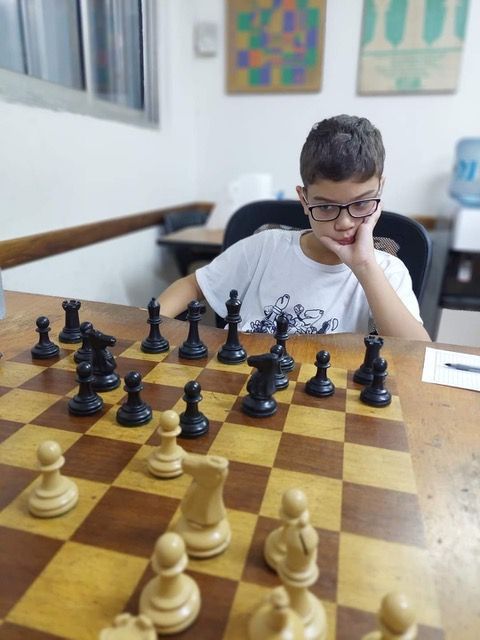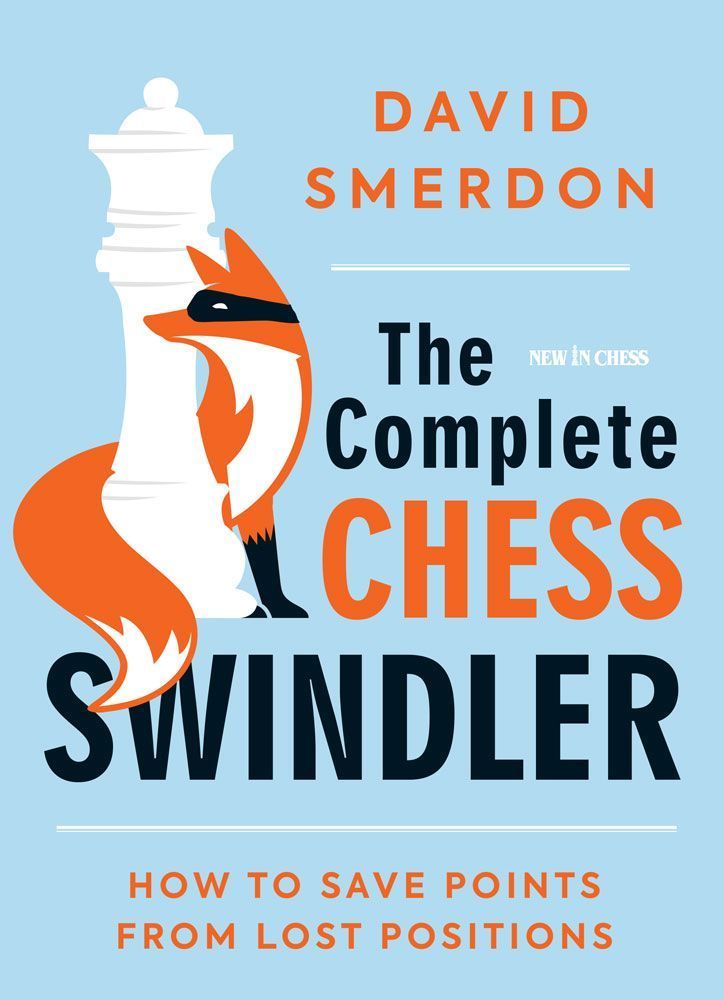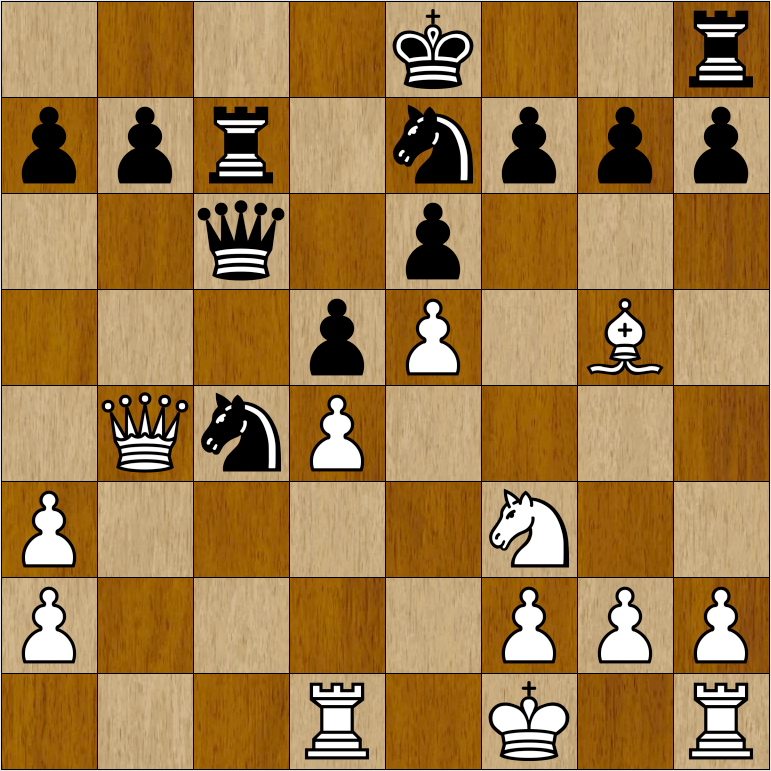The Cinderella Story
Elite-level invitational tournaments for females are very few and far between, whether that be in America or organised via Fide elsewhere in the globe. But one outstanding event is the Cairns Cup, the equivalent of the Sinquefield Cup, similarly organised and hosted by Saint Louis Chess Club - and with the same family connection and sponsorship!
Inspired by its mission to further promote the game of chess to females, the always-innovative Chess Club aptly chose the name “Cairns Cup” in honour of co-founder and US Chess Hall of Famer
Dr Jeanne Sinquefield’s maiden name: A 10-player, nine-round classical event with the strongest female fields ever, with a record-breaking $180,000 prize fund on offer.
The 3rd Cairns Cup ran June 3-12 with top seeds Humpy Koneru, Alexander Kosteniuk, Nana Dzagnidze and Harika Dronavalli expected to duke it out for the title and the lion’s share of the generous prize fund - but it didn't go to the script for the favourites, with the Cinderella-story proving to be a US veteran turning in the performance of her long career to become the unlikely winner.
Sadly, due to an ongoing medical issue, India’s Humpy Koneru had to withdraw after four rounds; with the results of her games, as per the FIDE rules, being cancelled - these withdrawal rules have been around for decades and have always proved controversial, and this was no different, as it directly hit Kosteniuk, who saw an early win over a main rival being annulled, which crucially could have seen the two-time former women’s world champion possibly finishing on 6/9.
But through it all, the player who got off to a storming start was the lowest-rated player in the field, the four-time US Women’s Champion, IM Anna Zatonskih, who defied the rating and the age odds to clinch the tournament with a round to spare, who with some memorable big wins - most notably against Kosteniuk, who fought back with a very strong winning run to take second place - notched up an undefeated score of 6/8 to take the title and $45,000 first prize.
In the process, Zatonskih, 44 - the lowest-rated player in the field by some 150-points - not only had the biggest victory of her long career, but late in life she also attained her first full GM norm, as she ecstatically proclaimed in victory: "Very happy. Wow, unbelievable! Yes, the best achievement in my chess career, definitely, the best in many years… Ketevan Arakhamia became a GM at the age of 40; she’s one of my role models.”
For the record, at 44 years and 11 months, Zatonskih now becomes the oldest American to achieve a full GM norm, eclipsing the past feats of John Donaldson (44y 9 m) and Enrico Sevillano (44y 4.5m). Larry Kaufman doesn't count in this respect, because with no previous GM norms, he only achieved the full title at the ripe-old age of 61 by virtue of winning the World Senior Championship title.
Final standings:
1.
IM A. Zatonskih (USA) 6/8;
2. GM A. Kosteniuk (Switzerland) 5;
3-4. GM B. Khotenashvili (Georgia), GM I. Krush (USA) 4.5;
5. GM N. Dzagnidze (Georgia) 4;
6-7. GM H. Dronavalli (India), GM E. Paehtz (Germany) 3.5;
8. IM G. Mammadzada (Azerbaijan) 3;
9. GM Z. Abdumalik (Kazakhstan) 2.
GM Alexandra Kosteniuk - IM Anna Zatonskih
3rd Cairns Cup, (4)
C02: French, Advance
1.e4 e6 2.d4 d5 Zatonskih has been a lifelong devotee of the French Defence. 3.e5 Rather than the more standard replies of 3.Nc3 and 3. Nd2, the Advance variation is the reserve for those souls with more enterprising spirits! 3...c5 4.c3 Nc6 5.Nf3 Qb6 6.Na3!? More usual in the Advance is 6.Be2/6.a3 (or perhaps even 6.Bd3 and the Milner-Barry Gambit) - but this an interesting, relatively newish millennium move championed by Russian original thinker Vadim Zyjaginsev with a speciality of surprising opponents with an early Na3, such as his provocative line against the Sicilian Defence with 1.e4 c5 2.Na3!?. 6...cxd4 7.cxd4 Bd7 The principled move is the immediate 7...Bb4+ 8.Bd2 and then 8...Bd7 (Highly dubious is the pawn snatch 8...Bxa3 9.bxa3 Nxd4 10.Qa4+ Nc6 11.Bd3 Ne7 12.Rb1 Qc7 13.O-O and White has excellent compensation for the pawn) 9.Nc2 (The reason behind 6.Na3) 9...Bxd2+ 10.Qxd2 Qxb2 11.Bd3 Nge7 12.O-O Qb6 13.Qg5 Ng6 where White has compensation, but Black does have the pawn! 8.Be2 Bb4+ 9.Kf1
It's no biggie, but the difference is the little king shuffle to f1 does at least preserve the bishop-pair.
9...Bxa3
As explained in the above note, this is a little suspect as White has the bishop-pair and open lines to attack - but on the other hand, Black has a solid position and the better pawn structure. 10.bxa3 Na5
Looking to play ...Bb5 to trade off the light-squared bishops.
11.Qd3
A little puzzling, as I thought the way to continue for White was 11.Bd3 Bb5 12.Rb1 Bxd3+ 13.Qxd3 Qc6 14.Bd2 Nc4 15.g3 with a space advantage; though once again, Black having a solid position and the better pawn structure.
11...Ba4 12.Bd2 Nc4 13.Rb1 Qc6 14.Qc3
Yet another puzzling queen move - I thought White had to play 14.Kg1 followed by h4-h5 etc.
14...Ne7 15.Qb4 Rc8 16.Bg5
The pawn is taboo for the obvious reason that 16.Qxb7?? Nxd2+ 17.Nxd2 Qxb7 18.Rxb7 Rc1+ winning.
16...Rc7 17.Bd1?
A blunder that leaves Kosteniuk struggling to stay competitive. Once again, better was 17.Kg1 with the plan of h4-h5 etc.
17...Bxd1 18.Rxd1(see diagram)
18...Qa6!
The reason for playing Kg1 earlier now becomes abundantly clear.
19.Kg1 Nc6 20.Qb3 Qxa3
What's not to like here for Zatonskih? She has an extra pawn AND the position.
21.h4
It's all too little too late now for Kosteniuk, as she has to defend a bad endgame sans a pawn.
21...Qxb3 22.axb3 Na3 23.h5 h6 24.Bd2 Nb5 25.Rh4 O-O
Also, a good option was 25...Ne7 followed by ...Rc2. But either way, Black stands much better with an easy endgame squeeze.
26.Rg4 Kh7 27.Be1 Rfc8
Zatonskih just gets on with the job of building up her position.
28.Rd3 Ne7 29.Bd2 Rc2 30.Bb4 Nc6
Better was 30...Rc1+ 31.Kh2 Nc6 32.Bd6 Rc2 as this gains a move, leading to 33.Kg1 Rd8 34.Rf4 Kg8 and White is set to lose a second pawn as the bishop has no retreating squares.
31.Bd2 Ne7 32.Bb4 R8c7 33.Nh4
An awkward move to have to make, but White has to stop ...Nf5 somehow.
33...Nc3 34.Bd6 Rd7 35.Bb4 Rc7 36.Bd6 Rd7
Zatonskih just repeats a couple of moves to gain time on the clock heading to the first time-control.
37.Bb4 Ne4 38.Rf4 Nc6 39.Ba3 Ra2!
Rendering White's bishop somewhat impotent - as well as the rest of the game, which just becomes academic for Zatonskih as she easily goes on to win a vital game against the tournament top seed en route to a famous victory.
40.b4 a6 41.f3
Losing the h5-pawn, but then again, what else to do considering that 41.g3 allows the forcing sequence 41...g5! 42.hxg6+ fxg6 43.Rff3 g5 44.Ng2 Kg7! 45.Ne3 Rf7 46.Rxf7+ Kxf7 47.Nd1 Rd2! 48.Rxd2 Nxd2 49.Bb2 Nb3 and the d4-pawn falls.
41...Ng3 42.Rg4 Nxh5 43.b5 axb5 44.Bc5 g5 45.f4 Nxf4
There are so many ways to win now, so it's a case of take your pick - but the engine being the engine, goes for the jugular with 45...f5! winning a piece with 46.exf6 Nxf6 etc.
46.Re3 Ne7 47.Nf3 Nf5 48.Rb3 Kg6
The rest is elementary for Zatonskih.
49.Kh2 Kh5 50.Rxf4 gxf4 51.Ne1 Ne3 52.Kh3 Kg5 53.g3 Nf5 54.Nf3+ Kg6 55.gxf4 Rf2 56.Bb6 Re7 57.Ba5 Re8 58.Be1 Re2 59.Rxb5 Ra8 60.Ba5 b6 61.Bb4 Re3 0-1










Copyright © 2024. First Move Chess. All Rights Reserved. Deigned and Hosted by JLT Web Design & Digital Marketing. Our Privacy Policy.



